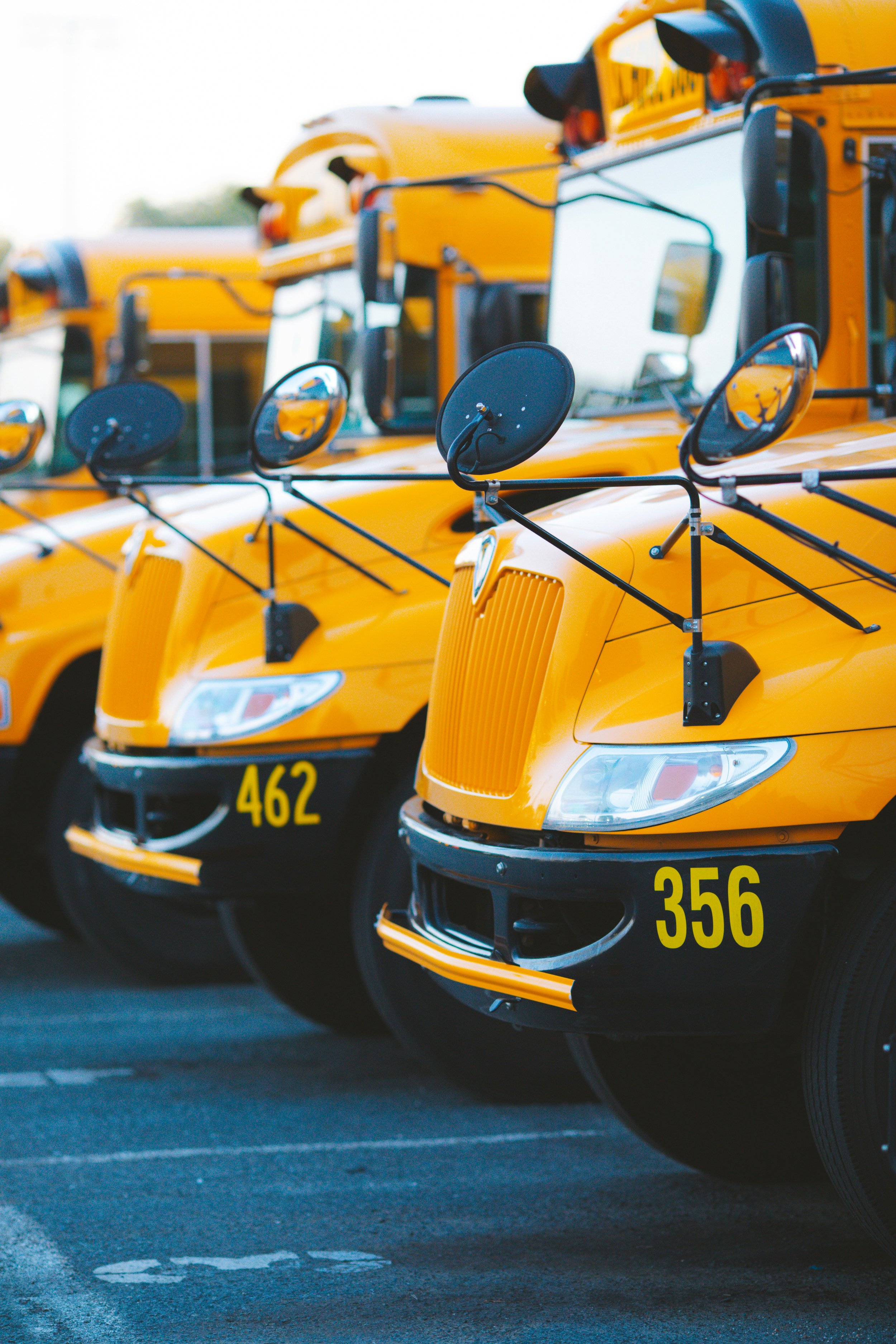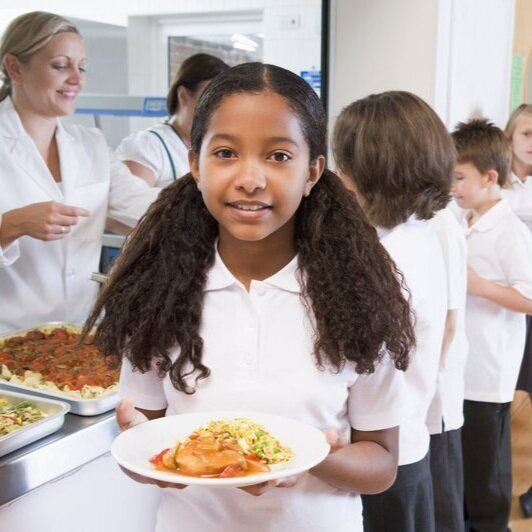Now is the Time for Every School to Switch to Reuse
Here’s why.
Schools consume and dispose of billions of single-use foodware items annually and generate a lot of waste that is not easily recycled or composted. Reuse is the solution.
The USDA reports that 4.7 billion lunches are served annually in the National School Lunch Program.
Reusable foodware in K-12 schools used to be the norm. But between the commercialization and transformation of school lunch programs into a plastic-processed, heat-and-serve model of food service; changes in school infrastructure and budgets; and the Covid pandemic, single-use now dominates in many cafeterias across the US.
Not only are these single-use foodware items harmful for the planet, but commonly-used single-use products in school food services have been found to be laced with toxic and carcinogenic perfluorinated compounds, commonly referred to as PFAS.
Let’s teach future generations to reuse instead of just recycle.
Sustainability is a goal for many schools around the country. But all too often they focus on diversion from landfills — through better recycling and composting — rather than eliminating unnecessary waste in the first place. The reuse economy is burgeoning, and normalizing reuse practices from a young age will help culture adapt and thrive in this inevitable economic restructuring.
“We didn’t want to normalize the idea that it’s okay to just use a dish for 15 minutes and then toss it in the trash”
Going reusable saves schools money.
Whether a school’s food is prepared and served on-site; prepared off-site and delivered from a central commercial kitchen; or provided by contracted food management companies, or a combination of the above—there are cost-effective solutions to shift to reuse in cafeterias.
Reallocating school budgets from maintaining a costly take-make-waste operation will build efficiency that:
reduces waste, carbon emissions. and plastic pollution
cuts costs
enhances the dining experience
offers a service that school communities enjoy and take pride in
In fact, analysis of existing case studies of K-12 schools that switched to reuse reveals:
Schools that switched some or all of their dishware to reusables saved an average of $23,6000
Schools broke even financially often within a few months and no more than the second year into their reuse programs (depending on up-front costs)
Almost all schools received funding from state grants and/or Plastic Free Restaurants, reducing or eliminating up-front costs while accelerating the benefits of long-term savings.
“We found we were able to start saving money within the second year of reuse because we weren’t constantly putting out funds to purchase something that literally goes in the trash can. The project became less cumbersome to our finances than it would have been had we stayed with our single-use products within about 19 months of undergoing this change to reusables.”
Grants for replacing milk cartons with bulk milk
The ubiquitous milk cartons found in school lunch rooms are generally not recyclable, and often milk carton waste (and discarded milk) is one of the largest sources of waste from school cafeterias. Schools are remedying this problem by installing bulk milk dispensers, and there are funding opportunities to help the transition:
In 2025, Zero Waste Washington secured a King County RE+ grant and began working with County schools to move from cartons of milk to bulk milk dispensers.
The Chef Ann Foundation offers funding to schools to switch to milk dispensers.
→ Worried about spillage? School lunch trays, like this Green-Screen certified tray, can be designed with the cup holder in the middle of the tray, providing the most stable surface.
When it comes to dishwashing, schools have options
Many schools find it cost-prohibitive to install and/or maintain commercial dishwashers—or they do not have the space. The conversation does not need to end there!
Contracts with a reuse service provider who can pick up, wash, and return dishware can replace expenditures on waste hauling and dishwasher installation or maintenance. This was the route Reaching All Minds Academy in Durham, NC took, and they broke even after 19 months. The Walpole, MA school district contract with reuse service provider Re:Dish involved no upfront costs and prevents 396,000 disposables from entering the waste stream annually.
Grants can help pay for the up-front cost of reusables. California piloted a dishwasher grant in 2022, and Upstream’s reuse grant tracker lists possibilities for reuse funding across the US and Canada.
Learn more about dishwashing options and case studies from Center for Environmental Health’s webinar: Dish Washing and Dish Machines in K-12 Schools
The role of schools in accelerating the reuse economy
The most ready sectors for the transformation to reuse include high volume, closed-loop sports and entertainment venues like stadiums and arenas—as well as K-12 school districts. The economies of scale provided by these high-volume venues allow other sectors in a municipality, such as grocery, public schools, restaurants, festivals, corporate cafes, local food producers, and retirement communities, which may not previously have been able to afford reuse systems on their own, to now access services. What begins as one anchor contract in a ready sector catalyzes transformation in how an entire city thinks about waste and materials.
A Community of Support
If you are interested in making the switch in your school community, check out the resources, podcasts, and articles below as well as these groups and organizations:
Resource & Media Library
-

The Conscious Cafeteria Report
Upstream & Ahimsa (2024)
-

School Case Study Roundup
A directory of school case studies, maintained by Upstream. See our full Reuse Case Study Explorer here.
-

Ditching Disposables Toolkit
Center for Environmental Health (2024)
-

Ditching Disposables: Dish Washing and Dish Machines in K-12 Schools
Center for Environmental Health (2022)
-

Reuse for Onsite Dining Library
Maintained by Upstream — contains several resources relevant to reuse in schools
-

Key Takeaways & FAQS for Switching to School Reuse
Green Schools Alliance
-

How Schools Can Work with County Health Departments to Implement Non-Toxic Reuse
CEH & Upstream webinar (2025)
-

Infographic: Keeping loss rates low in school cafeterias
Upstream & ReThink Disposable (2025)
-

Reuse in Berkeley Schools
Chart-Reuse Case Study (2024)
-

Life Cycle Environmental & Cost Analysis of Disposable vs Reusable Ware in School Cafeterias
School Nutrition Foundation (2009)






















EPISODE 183: Lessons from the California school district that helped 300+ schools transition to reuse through a statewide grant program.